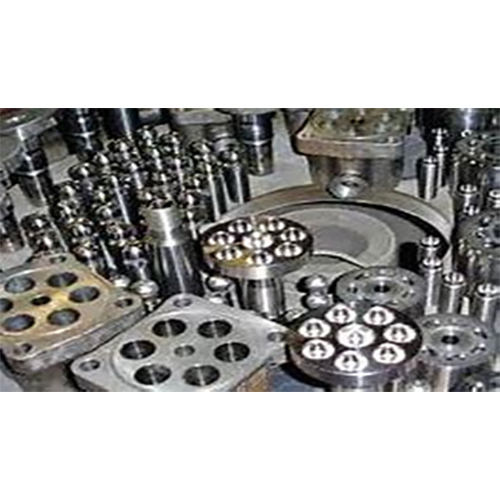Heat Treatment Of High Speed Steel (Hss)
Heat Treatment Of High Speed Steel (Hss) Specification
- Product Name
- Steel Components
- Steel Type
- Stainless Steel
- Steel Product Type
- Steel Profiles
- Grade
- Industrial
- Application
- Construction
- Color
- Sliver
Heat Treatment Of High Speed Steel (Hss) Trade Information
- Minimum Order Quantity
- 10 Pieces
- Supply Ability
- 1000 Pieces Per Month
- Delivery Time
- 7 Days
About Heat Treatment Of High Speed Steel (Hss)
DEFINITION
High Speed Steel HSS is a class of tool steel known for its ability to retain hardness and strength at high temperatures making it ideal for cutting tools drills and other applications requiring wear resistance and high temperature performance Heat treatment is critical in achieving the desired mechanical properties in HSS such as hardness toughness and wear resistance
OBJECTIVES OF HSS HEAT TREATMENT
Hardness Development : Achieve a high level of hardness typically 6270 HRC for cutting and machining applications
Wear Resistance : Enhance resistance to abrasion under high speed conditions
Thermal Stability : Improve performance at elevated temperatures without losing hardness
Toughness : Balance hardness with toughness to prevent brittle failure
KEY HEAT TREATMENT STAGES
Annealing
Purpose Soften the steel for machining and relieve internal stresses
Process Heat to 700950C and hold for several hours Cool slowly in a furnace 4080C hour to 600C then air cool
Hardening Austenitizing
Purpose Dissolve carbides and create a martensitic micro structure during quenching
Process Heat to 11501280C depending on HSS grade and hold for the required soaking time
Use vacuum or inert atmosphere furnaces to prevent oxidation Quench rapidly in oil air or high pressure gas
Tempering
Purpose Relieve stresses from quenching and enhance toughness while maintaining hardness
Process Conduct multiple tempering cycles usually 23 Heat to 500600C for each cycle and hold for 12 hours
Allow cooling to room temperature between cycles
Stress Relieving
Purpose Remove residual stresses from machining or previous treatments
Process Heat to 600700C and cool slowly
HSS Heat Treatment Techniques
Vacuum Heat Treatment Advantages
Ensures clean oxidation free surfaces
Precise temperature control for consistent properties
Commonly used for high precision tools
Heat Treatment Advantages
Provides rapid and uniform heating
Effective for small and intricately shaped tools
Requires careful handling to avoid contamination
Conventional Furnace Treatment Advantages
Cost effective for large batches
May require protective atmospheres to prevent oxidation
PROPERTIES ACHIEVED AFTER HEAT TREATMENT
Hardness : Typical hardness ranges from 6270 HRC
Wear Resistance : Superior resistance to abrasive and adhesive wear due to carbide dispersion
Red Hardness : Retains hardness at temperatures up to 600650C crucial for cutting tools operating at high speeds
Toughness : Improved resistance to chipping and cracking during heavy duty applications
Common Grades of HSS M2 High Toughness General purpose HSS for drills taps and milling cutters
M35: Cobalt Based Enhanced wear resistance and red hardness due to 5 cobalt content Ideal for high performance cutting tools
M42: High Cobalt Content Superior hot hardness and wear resistance with 810 cobalt Used in heavy duty machining and cutting applications
T1: TungstenBased Traditional HSS with excellent toughness and wear resistance
KEY APPLICATIONS OF HEAT TREATED HSS
Cutting Tools : Drills taps milling cutters end mills and reamers
Forming Tools : Dies and punches for metal forming
Saws and Blades : Band saws and circular saws for high speed cutting
Aerospace Components : Precision tools for machining aero space grade materials

- Minimum Order Quantity
- 10 Pieces
- Supply Ability
- 1000 Pieces Per Month
- Delivery Time
- 7 Days

Price:
- 50
- 100
- 200
- 250
- 500
- 1000+



